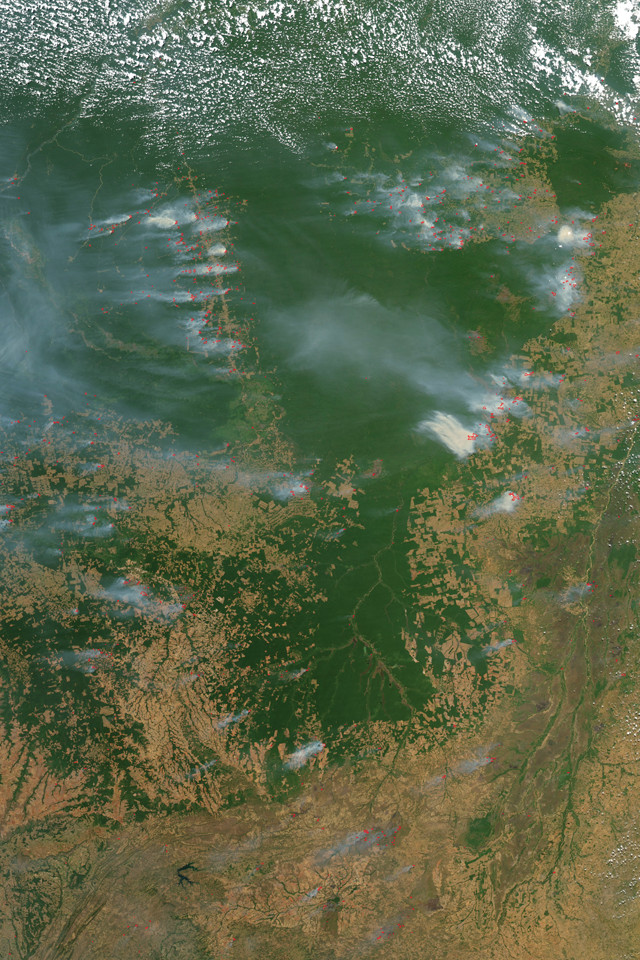
by Timothy Oleson Monday, September 21, 2015

Taken by NASA's Aqua satellite, this image shows deforested areas and active forest fires (red dots) in the Brazilian state of Mato Grosso on Aug. 12, 2007. Credit: NASA Earth Observatory/Jesse Allen.
Forest fires across the Amazon Basin — many of which are set intentionally to clear land for human use — burn thousands of square kilometers each year, releasing roughly 240 billion kilograms of stored carbon to the atmosphere. According to a new study, however, the vast amounts of black carbon and other aerosolized particles also sent into the skies by such fires offset much of this carbon loss by stimulating increased photosynthesis.
As the intensity of sunlight hitting plants increases, rates of photosynthesis also rise, but only to a certain level, beyond which leaves become light-saturated and no longer take up atmospheric carbon any faster. Tiny aerosol particles scatter incoming sunlight, however, causing it to diffuse into parts of forest canopies that don’t normally receive direct rays. This increases photosynthetic rates in these otherwise dimly lit parts of the forest.
Using a combination of biomass-burning, climate and vegetation data in the Amazon collected on the ground and by satellites, Alexandru Rap of the University of Leeds in England and his colleagues modeled how fire-lofted aerosols affected light diffusion and carbon uptake over the massive forest between 1998 and 2007. They found that increased light diffusion based on estimated aerosol levels should have resulted in a 1.4 to 2.8 percent increase in net vegetation growth, enhancing annual carbon uptake by 78 billion to 156 billion kilograms, or enough to offset 33 to 65 percent of the yearly carbon emissions from biomass burning.
This is good news for those concerned about rising greenhouse gas emissions, but “it should be noted that this offset occurs only once, while the loss of forest caused by deforestation persists for decades,” Rap and his colleagues wrote in Geophysical Research Letters.
© 2008-2021. All rights reserved. Any copying, redistribution or retransmission of any of the contents of this service without the expressed written permission of the American Geosciences Institute is expressly prohibited. Click here for all copyright requests.